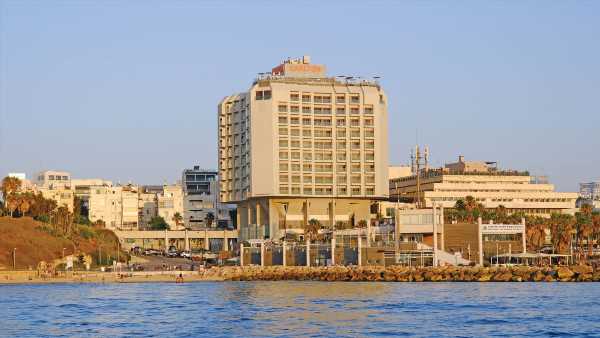Displaced citizens fill hotels as Israel tourism grinds to a halt
Israel’s resort town of Eilat, normally teeming with divers, beachgoers and travelers en route to Petra, is today full of displaced Israelis from parts of the country that have been under attack during the ongoing war with Hamas.
“Eilat and the resort area of the Dead Sea have become refugee enclaves packed with families and civil society organizations,” said Yaniv Belhassen, a professor with the Department of Tourism and Leisure Management at Israel’s Ben-Gurion University of the Negev.
Belhassen recently visited family members who relocated to Eilat after they were forced to evacuate Nir Oz and Nir Yitzhak, two kibbutzim attacked by Hamas on Oct. 7. He said his relatives expect to remain in hotel accommodations for at least another month, while evacuees who have lost their homes in the attacks may be there even longer.
In Tel Aviv, boutique hospitality group Brown Hotels, which has 18 properties spread across Tel Aviv, Jerusalem and Eilat, said it is also housing a mix of evacuated families and military personnel and that all of the company’s hotels remain operational. Likewise, the beachfront Carlton Tel Aviv remains fully open, with general manager Yossi Navi estimating that occupancy, currently at 80%, is mostly displaced Israeli citizens and a smaller percentage of foreign embassy officials and journalists.
“Because we have a lot of families here right now, we have a lot of volunteers coming in, as well, to provide activities and entertainment,” Navi said.
Pini Shani, the Israel Ministry of Tourism’s senior deputy director general of marketing, said that the government is subsidizing a large share of these hotel stays for evacuees, creating a much-needed source of income for the hospitality sector.
Other travel and hospitality suppliers reliant on tourism, however, have been left without a revenue stream.
“Most of the restaurants, bars, cafes and other tourist and leisure attractions [across Israel] are closed,” Belhassen said. “Needless to say, tourism agencies, tour guides and tour operators are almost jobless these days.”
Israel’s government has pledged to provide emergency financial aid to businesses significantly impacted by the war, but Belhassen remains concerned about the economic crisis the conflict has created.
“Although the government decided to help businesses that will experience a decrease of 25% of their revenue during the war, it is reasonable to assume that many of the small tourism entrepreneurs might not survive the crisis,” he said, adding that this type of fallout has “the potential to negatively affect the overall national tourism product after the war ends.”
With that in mind, the country’s tourism authorities are urging the global travel community to remain at the ready to support Israel in its eventual restart.
“One of the things that we are trying to convey to our partners overseas is to delay tours or postpone them but not to cancel them,” Shani said. “We know a recovery will take time and that it’s not as though the war will be over and then the next day the country will be packed with tourists. It will be a process, but it will happen.”
That sentiment was echoed by Chad Martin, director of the northeast region for the Israel Ministry of Tourism, while addressing a room full of luxury travel advisors during Global Travel Collection’s annual Elevate conference in New York in late October.
“Hold tight to bookings,” Martin implored. “If you have plans, keep them. If they’re too soon, postpone them. This isn’t the first time we’ve had a conflict. When I call partners, they say, ‘When day one happens, I have people ready to go.'”
A good year derailed
The war interrupted what was on track to be a banner year for Israel in terms of visitor numbers.
According to data from the ministry of tourism, Israel was forecasting a total of 4.2 million tourists for 2023.
That number — curtailed by an ongoing deficit of Chinese, Ukrainian and Russian visitors — still falls short of 2019’s peak of roughly 4.5 million tourists but reflects a significant pandemic-era recovery.
The country was also seeing a steep increase in U.S. tourists, who already comprise the largest share of international visitors to Israel.
“We had anticipated that, by the end of the year, we’d reach 1 million people visiting Israel from the USA, which is obviously a huge number,” Shani said. “We rely on the American market, and we know from past experience that the [return] from the American market is quick and strong.”
Source: Read Full Article



